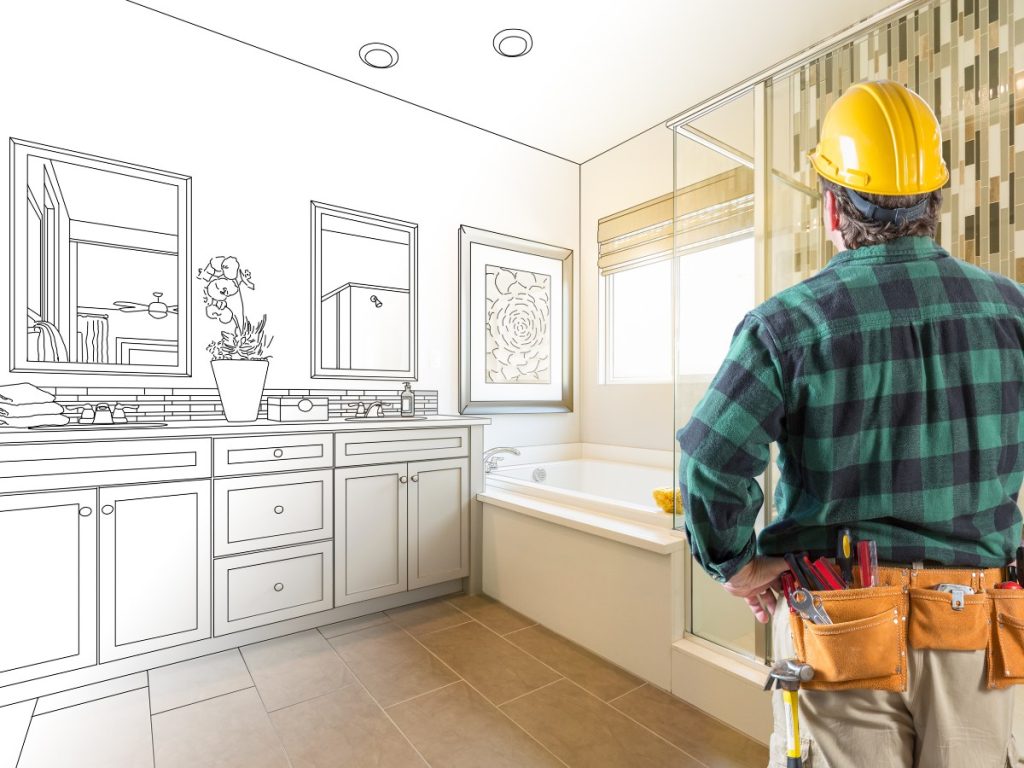Welcome to our informative blog post on the average cost per square foot to remodel your home in 2023. Are you considering a renovation project for your beloved abode? Well, fret not, for we’re here to guide you through the financial aspect of your home transformation.
While the process can be daunting, we want to equip you with all the necessary information so you can make well-informed decisions. From unexpected expenses to exciting possibilities, we’ll explore all the essential details you need to know to achieve your dream home within a budget that suits you.
Understanding the Average Cost of Remodel a Home
Knowing the average home renovation cost can effectively help you plan your budget. It’s crucial to understand the cost factors involved in remodeling and make informed decisions.
Researching the average cost can give you an advantage when negotiating with contractors. Familiarizing yourself with these costs can prevent unexpected financial surprises. Additionally, being aware of the average cost allows you to prioritize your renovation projects wisely, ensuring that you stay within your renovation budget.
Defining Home Remodeling Costs
Home remodeling costs include materials, labor, permits, and taxes. The size of the project, scope of work, and building materials used contribute to remodeling costs.
Costs can vary depending on the specific room or area being renovated. Understanding the cost breakdown helps allocate your budget effectively. Calculating costs in advance allows for better project planning. By defining home remodeling costs, you can make informed decisions about your renovation projects.
Calculation of Average Cost per Square Foot
Calculating the average cost per square foot for your remodeling project is crucial to determining the overall budget. It involves dividing the total cost of the remodel by the total square footage of your home.
This calculation gives you an estimate of how much you can expect to spend per square foot. Using this metric, you can gauge the affordability of different projects and make informed decisions about where to allocate your resources.
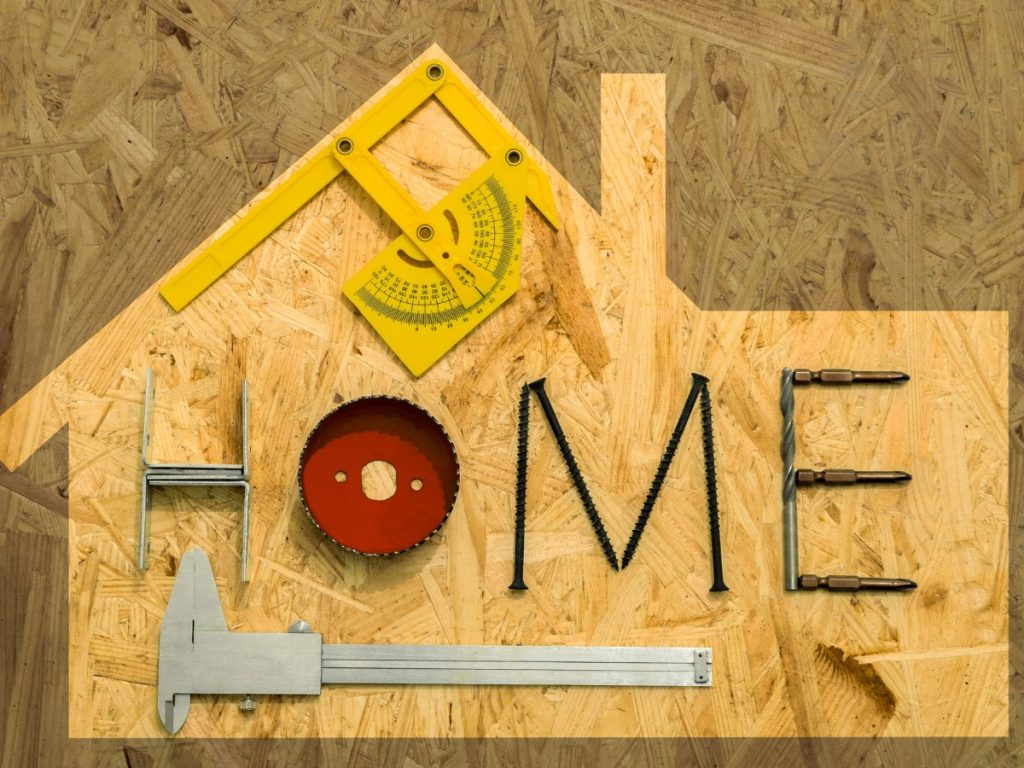

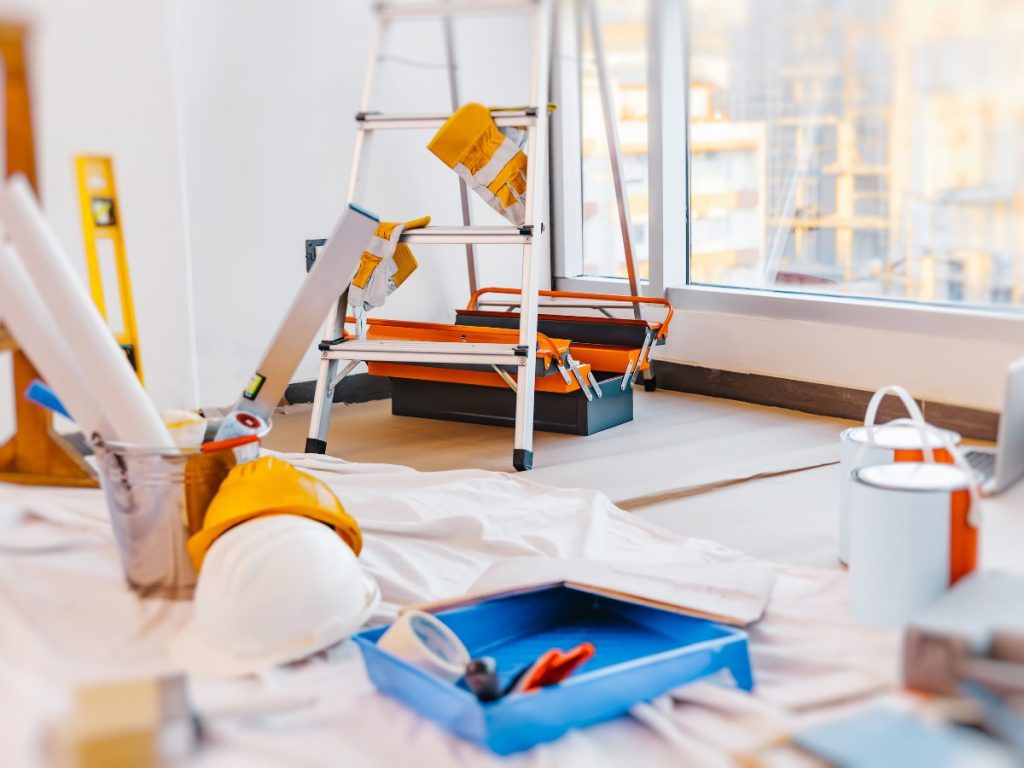
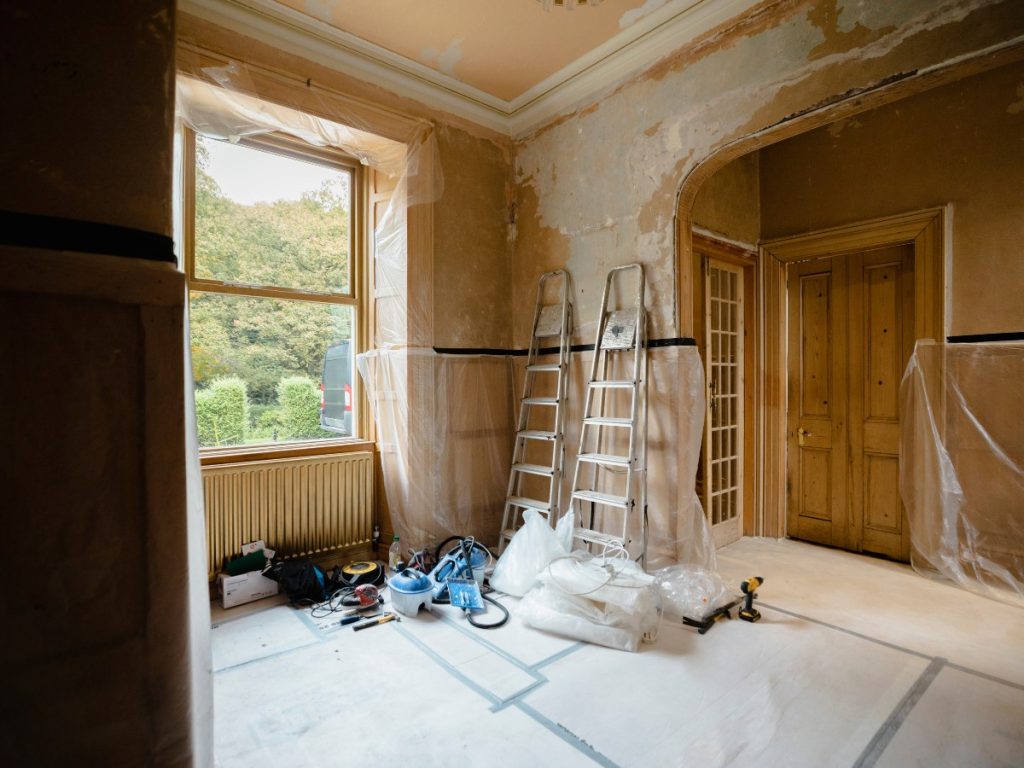
Factors that Influence Home Remodeling Costs
Factors such as the size and type of your home, materials and labor costs, permits and taxes, unexpected repairs, and high-end renovations can all impact the total cost of your home remodeling project. The size and type of your home play a significant role in determining the overall cost, as larger homes generally require more materials and labor.
Additionally, obtaining necessary permits and paying associated taxes can add to your expenses. Unexpected structural repairs and changes during the remodeling process can also increase costs. Renovating specific high-end areas, such as kitchens or bathrooms, can further drive up the expenses.
Impact of Home Size and Type
The size and type of your home can have a significant impact on the cost of remodeling. Larger homes generally require more materials and labor, resulting in higher remodeling costs.
Additionally, different home types, such as single-family homes, condos, or townhouses, can have varying considerations regarding remodeling costs. Moreover, the square footage of your home directly affects the total remodeling cost. More square footage means more materials and labor are needed, which can drive up the cost.
Importance of Permits and Taxes
Acquiring the necessary building permits for your home renovation project can increase the overall cost. Additionally, sales tax, building permits, or property tax may apply to specific remodeling projects, further adding to the expenses.
It is crucial to understand the legal requirements and associated costs of permits and taxes to ensure accurate budgeting for your renovation project. By taking these factors into account, you can avoid unexpected costs and potential legal issues.
Breakdown of Home Remodeling Cost by Room Type
Regarding home renovation, the cost of remodeling different rooms can vary significantly. For the living room, the expenses depend on factors like desired changes, materials used, and labor involved. If you’re renovating your bedroom, a budget-conscious approach focusing on specific areas of improvement can be cost-effective.
However, remodeling the kitchen can be a significant investment due to the need for high-end materials, appliances, and skilled labor. Each room has its standard costs and considerations, so it’s essential to plan your home improvement projects accordingly.
Cost of Remodeling Bedroom
Revitalizing the bedroom can be achieved cost-effectively by repainting the walls, updating the flooring, and replacing light fixtures. To improve the room’s aesthetic, upgrading the furniture, including the bed, nightstands, and dressers, is a good idea, although the cost may vary based on personal choices.
Enhancing the overall remodeling cost of the bedroom can be done by adding new window treatments like curtains or blinds. Additionally, installing new electrical outlets, switches, or wiring for home automation features can contribute to the total cost. Custom closets or built-in storage solutions also impact the bedroom’s remodeling cost.
Cost for Remodeling Kitchen
Remodeling a kitchen involves various factors that can influence the overall cost. Upgrading countertops, cabinets, and appliances can significantly impact the expenses. Additionally, installing new flooring, light fixtures, and plumbing fixtures can enhance the kitchen’s appearance, with costs varying based on the chosen materials.
Adding a kitchen island, expanding the space, or reconfiguring the floor plan can also increase the remodeling cost. Upgrading electrical wiring, plumbing, and ventilation systems are additional elements that contribute to the total expenses. Incorporating high-end materials and customized features like a backsplash can drive up the cost of remodeling the kitchen.
Cost of Remodeling Bathroom
When it comes to remodeling your bathroom, there are a few factors to consider that can impact the cost. The size of the room plays a significant role, with renovations typically costing between $5,000 and $15,000. Another factor to remember is the average cost per square foot, which ranges from $125 to $250, covering materials and labor.
Upgrading fixtures, flooring, and plumbing can also have a significant impact on the overall cost of your bathroom remodel. It’s essential to accurately estimate the scope of your project to ensure an accurate cost assessment. Hiring a professional contractor can help you stay within budget and complete the remodel efficiently.

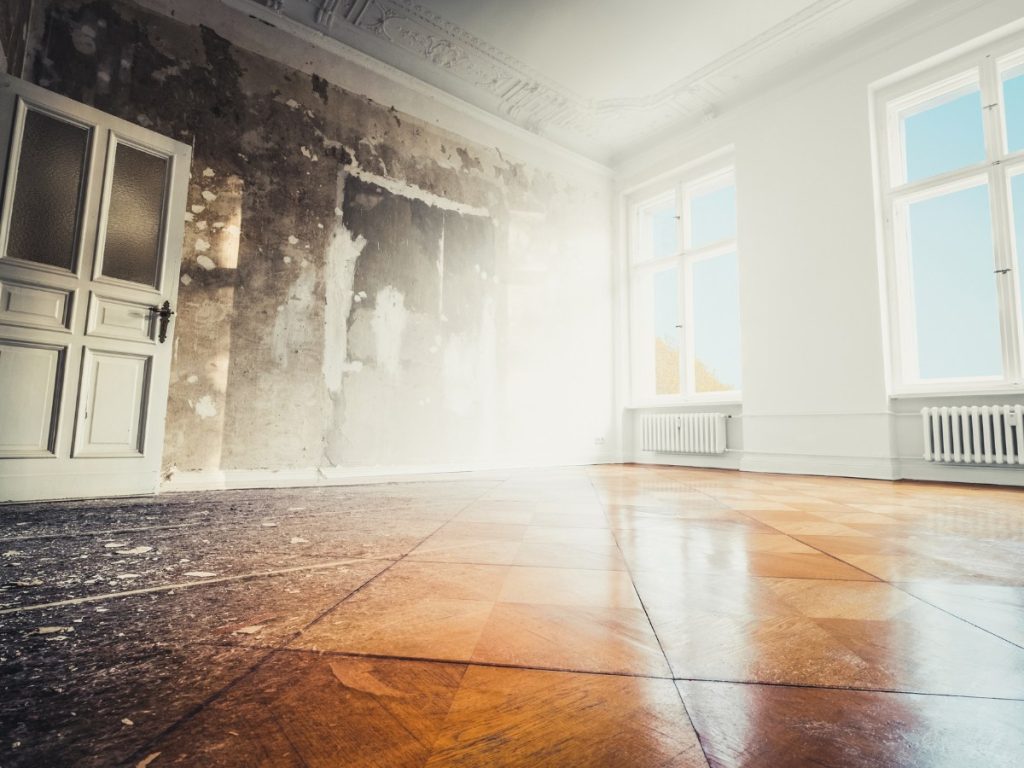
Estimating Home Remodeling Cost by Square Foot
Estimating the cost of home remodeling projects by square foot can provide a general idea of the total expenses. The average cost per square foot for home remodeling is typically around $100, although this can vary based on project scope and materials used.
It’s important to consider that costs may increase for high-end materials, structural changes, or unforeseen circumstances during the renovation process.
To obtain an accurate estimate tailored to your specific project requirements, it’s recommended to consult with a contractor or remodeling professional. Remember, the cost per square foot serves as a starting point, and the total cost of your project may differ depending on various factors.
Evaluating Cost for Gut and Remodel
When evaluating the cost for gut and remodel projects, it’s essential to consider the size of your home and the project’s scope. Typically, gutting and remodeling can range from $50,000 to $150,000. The cost per square foot for a gut remodel varies between $75 and $200, covering demolition, structural changes, electrical work, plumbing, and new materials.
To ensure accuracy, consulting with remodeling professionals and hiring a structural engineer for assessment and permits are crucial steps. Additionally, unexpected repairs like foundation or structural repairs should be factored in.
Additional Costs in Home Remodeling to Consider
When planning a home renovation project, it’s crucial to consider the additional costs beyond the average cost per square foot remodel. Upgrading appliances, fixtures, and light fixtures can contribute significantly to the overall expense.
Additionally, tasks such as foundation repairs, plumbing, and electrical work require specialized professionals, which can increase the overall cost of the project.
Pay attention to expenses like building materials, permits, labor, and unexpected circumstances that may arise during the remodeling process. Collaborating with interior designers or remodeling professionals can help you effectively plan and budget for these additional costs.
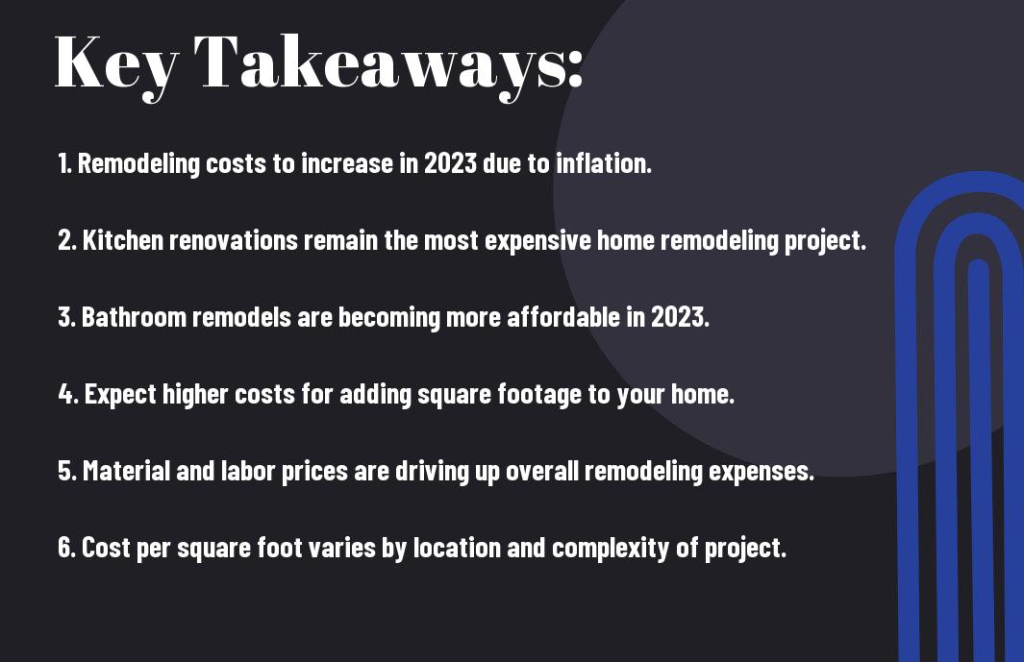
Updating Appliances and Fixtures
When remodeling your home, updating your appliances and fixtures can have a significant impact on the overall cost. It’s essential to budget for new kitchen appliances, bathroom fixtures, light fixtures, and plumbing fixtures, as these items can vary in price. Consider the specific room remodels and the materials needed to ensure that your budget includes the cost of the new appliances and fixtures.
Handling Foundation Repairs and Plumbing
When remodeling your home, it’s essential to consider the added cost of handling foundation repairs and plumbing work. Before starting the project, it is essential to hire a structural engineer to assess any potential foundation issues and provide the necessary repairs.
Additionally, budgeting for plumbing work, such as replacing old pipes or fixtures, is crucial. Consulting with plumbing professionals and structural engineers will help evaluate the project’s scope and estimate costs accurately. It’s essential to be prepared for unforeseen circumstances requiring additional budgeting.
Trends in 2023 for Average Remodeling Cost per Square Foot
Keeping up with the latest trends in remodeling costs is essential to ensure you are well-prepared. In 2023, several factors will influence the average remodeling cost per square foot. It’s important to note that material and labor costs are expected to rise. This increase may impact the final cost of your remodeling project.
However, it’s not all negative news. With technological advancements, new and cost-effective materials are also entering the market. This can lower costs in some areas and provide more affordable options for your remodel.
Understanding the average cost per square foot is an essential step when planning your home remodel. By calculating this metric and staying current on the latest trends, you can make informed decisions about your project. Remember always to consider your specific needs and prioritize your budget accordingly.
Saving Strategies for Home Remodeling
When it comes to saving money during your home remodeling journey, there are several strategies you can implement:
- Comparison Shopping: Before making any significant purchases, such as appliances or materials, take the time to compare prices from different suppliers. You’ll be surprised at the potential savings you can achieve by finding the best deals.
- DIY Projects: Consider taking on tasks that don’t require professional expertise. Painting, installing shelves, or even basic landscaping can be rewarding and help cut labor costs.
- Reuse and Recycle: Instead of splurging on brand-new items, explore options to repurpose existing furniture, fixtures, or materials. Not only will it save you money, but it also adds a unique touch to your remodel.
- Negotiate and Communicate: Don’t shy away from negotiating prices with contractors or suppliers. Be open and transparent about your budget constraints, and they may be willing to work with you to find cost-effective solutions.
FAQ
Q: What is the average cost per square foot to remodel a home in 2023?
The average cost per square foot to remodel a home in 2023 can vary depending on several factors, such as the scope of the project and the location of the property.
On average, however, you can spend around $150 to $300 per square foot for a remodel. It’s important to note that this is just an estimate, and the actual cost can be higher or lower based on individual circumstances.
Q: What factors can influence the cost of remodeling my home?
Several factors can influence the cost of remodeling your home. Some of the critical factors include the size of your project, the complexity of the design, the quality of materials and finishes you choose, as well as the current condition of your home.
Additionally, factors like labor costs, permits, and fees, and any unexpected repairs that may come up during the remodel can also impact the overall cost.
Q: How can I keep the costs of my home remodeling project within budget?
- Keeping your home remodeling project within budget is crucial. Here are a few tips to help you achieve that:
- Plan and set a realistic budget before starting the project.
- Research and compare prices of materials and contractors to find the best deals.
- Consider prioritizing your needs and focus on essential renovations first.
- Communicate openly with your contractor and negotiate prices if necessary.
- Prepare for unexpected expenses by setting aside a contingency fund.
- Regularly monitor and track your expenses to stay on top of the budget.

